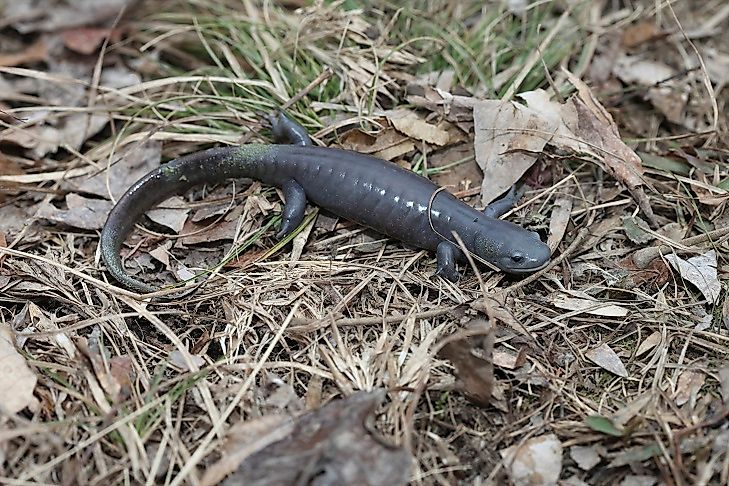Mole Salamanders: Animals of North America

5. Characteristics and Ambystoma Species
There are two well-known uni-sexual all-female populations of the mole salamander that hybridized from the blue-spotted and Jefferson salamander thousands of years ago. The Silvery Salamander, Ambystoma platineum and the Tremblay's Salamander, Ambystoma tremblayi have both slim dark bodies that grow to about 5.5 inches to 7.75 inches in length. Both belong to the all-female Ambystoma species. Their bodies are almost covered with tiny silver bluish dots while body area is brown gray. Juveniles have brighter blue spots. The Kelly's Island salamander, A. nothagenes, is the third known unisexual in the Ambystoma genus. Other examples of the normal Ambystoma species are the tiger, blue-spotted, Jefferson, small-mouthed, slimy, and the neotenic axolotl from Mexico.
4. Habitat and Range
Mole salamanders of the Ambystoma genus generally live in the North American Great Lakes and the Northeastern United States. Larvae and sometimes juvenile mole salamanders can usually be found in slow-moving streams or in ponds all year-round. The adult salamander is terrestrial and leaves the water for burrows in the forest. Although the Ambystoma neotenic Axolotl from Mexico remains in its larvae form throughout its lifetime and never leaves the water. Some adult salamanders hibernate in the winter and return to the water only to breed. Uni-sexual salamanders belong to the Ambystoma genus that are endemic to North America. Silvery salamanders can be found in Indiana, Ohio, south-central Michigan, western Massachusetts, and northern New Jersey. Tremblay's salamanders are found in Michigan, Quebec, Ohio, Indiana, Wisconsin, and New England. Their favorite habitats are ponds and shallow rivers.
3. Feeding and Social Behavior
Generally, mole salamanders maintain an insectivorous diet but in absence of their favorite bugs may eat anything that is edible. The usual menu would consist of worms, soft insects, ants, spiders, and slugs. March to April are the breeding months for most uni-sexual salamanders. Their larvae like other salamanders, stays in the water until post-juvenile when they leave the water and become terrestrial. Adults live in forest burrows they dig or those abandoned by other mammals. Birds, fish, dogs, and raccoons are their general predators. Unisexual salamanders are quite secretive and difficult to observe at adulthood so little is known about their social behavior in the wild. The Silvery Salamander is considered endangered in Illinois where only a small population is thriving due to habitat-loss.
2. Reproduction and Self-Cloning Capabilities
The Silvery salamander and the Tremblay's salamander are both unisexual, defined as all-female population species as a result of genetic and reproductive anomalies. These two Ambystoma species only mate to activate their eggs but the sperm of the male salamander does not have any effect on the genetic outcome of the offspring. As a result, all of the offspring are female. The Silvery salamander does not have a male counterpart so it goes back into its genetic lineage to breed. It seeks out the Jefferson salamander to mate which happens usually from March to April. The same for the Tremblay's salamander who also seeks out its genetic lineage and mates only with a male blue-spotted salamander. As a result, both uni-sexual salamander species retain their gene pool that is considered by some as self-cloning capability.
1. Threats, Research, and Conservation
Mole salamanders are quite numerous in North America and Canada. However in Illinois, the Silvery salamander is considered endangered. Its habitat has been drying up before the eggs could hatch. Research into the Ambystoma uni-sexual salamander species have been done and continues but there is difficulty in classification because of hybridization. There is a study that suggests that the maternal ancestor of uni-sexual salamanders was closely related to the streamside salamander. The actual hybridization could have happened 2.4 to 3.9 million years ago. The presence of the A. laterale genome was seen as the essential factor for the uni-sexuality of these two species of the Ambystoma genus of salamanders.











